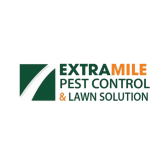Recap of May First Friday with Florida First Detector
In May, we picked up again with our discussion of wood boring insects. This time, we focused more on the bark beetles (Family: Curculionidae). Many bark beetles help break down dead or dying trees in the environment. However, a few species will attack otherwise healthy trees. In the family Curculionidae, some of the common problematic species are in the subfamilies Platypodinae and Scolytinae. Some of the troublesome species are ambrosia beetles that live in a close symbiotic relationship with fungi. Ambrosia beetles will carry the fungi with them and farm it within the trees. In some cases, the fungus they carry can also cause damage to the trees the beetles occupy.
Two bark beetles that have not been introduced to the U.S. include the oak ambrosia beetle (Platypus quercivorus) and the Sweetgum inscriber (Acanthotomicus suncei). Both species could cause trouble if introduced to Florida. The oak ambrosia beetle is native to Asia and is a pest of healthy oak trees. This species also vectors a the pathogen, Raffaelea querivora, which causes Japanese oak wilt. The beetle and pathogen could be a problem for our oaks in the U.S. if it were to be introduced. The sweetgum inscriber could harm our American sweetgums if it were to arrive in the U.S. It causes such high losses to American sweetgum that nurseries in China that once produced American sweetgum have stopped commercial production of the tree. Many bark beetles can be challenging to identify. While we covered some tips and trips for identification in the webinar, it is best to submit a sample if you are seeing unusual damage and beetles.
We also talked about an invasive ambrosia beetle that is causing trouble in Florida, the redbay ambrosia beetle, Xyleborus glabratus. Native to Asia, this species was first found in the U.S. in Georgia in 2002. A few years later in 2005, it was found in Florida too. The redbay ambrosia beetle vectors the pathogen, Raffaelea lauricola, which causes laurel wilt. The beetle and pathogen has led to problems in both natural areas and agricultural production. They can harm several plants including redbays, sassafras, avocadoes, and more.
Resources on Invasive Bark Beetles
FDACS Pest Alert on Sweetgum Inscriber
Ask IFAS Document on Redbay Ambrosia Beetle
Ask IFAS Redbay Ambrosia Beetle and Laurel Wilt Management in Commercial Avocado Groves
Ask IFAS Laurel Wilt Management in Avocados in the Home Landscape
CABI Factsheet on Oak Ambrosia Beetle
Ask IFAS Document on Southern Pine Bark Beetle
UF IFAS Guide to Florida’s Common Bark and Ambrosia Beetles
Want to watch the recording?
What is the upcoming schedule?
We are meeting online via Zoom from 12:00PM-1:00PM on the First Friday of every month from Sept 2022-Aug 2023. Please visit this blog for registration information and the upcoming schedule.
Questions?
Contact Dr. Morgan Pinkerton, morgan0402@ufl.edu
Or
Visit the Florida First Detector Website
The post May First Friday with Florida First Detector appeared first on UF/IFAS Pest Alert.
Recap of May First Friday with Florida First Detector In May, we picked up again with our discussion of wood boring insects. This time, we focused more on the bark beetles (Family: Curculionidae). Many bark beetles help break down dead or dying trees in the environment. However, a few species will attack otherwise healthy trees.
The post May First Friday with Florida First Detector appeared first on UF/IFAS Pest Alert.
—
Source: UF/IFAS Pest Alert
From: Read More



